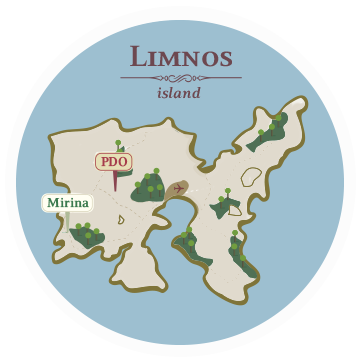Dry White Wine, Muscat of Alexandria, P.D.O.
Aromatic gold-yellow colored grapes. The “Muscat of Alexandria” variety is cultivated in the island since 1920, on rich red soil at an altitude of 200-250 meters above sea level. Muscat of Alexandria (or English, or Zibbibo) is practically a monoculture for Limnos, and it is traditionally used as triple use variety for wine-making, raisin production and as a table variety.
Muscat cultivation becomes intensified from 1922 onwards, when refugees from Asia Minor – who were also experienced winemakers – arrived to the island. Today, this particular variety covers almost the entire grape production in Limnos, in mostly organic vineyards. It represents one of the most actively emerging labels of Greek winemaking labels, thanks to its divine shining goldish color and fruity aroma which are an excellent accompaniment to fishes and selections of local cheeses.





